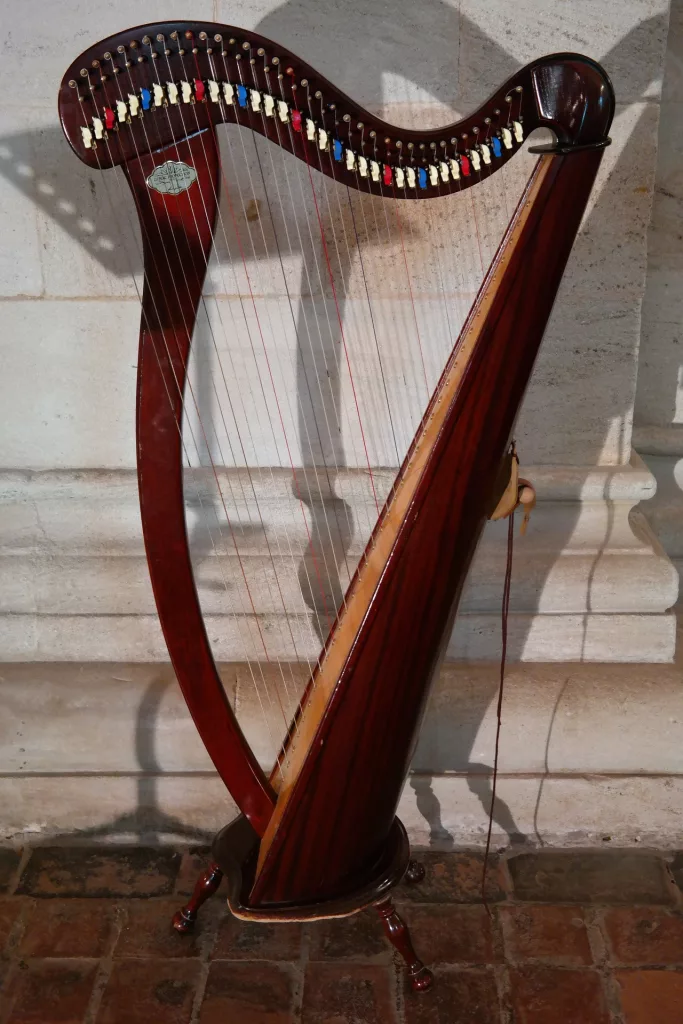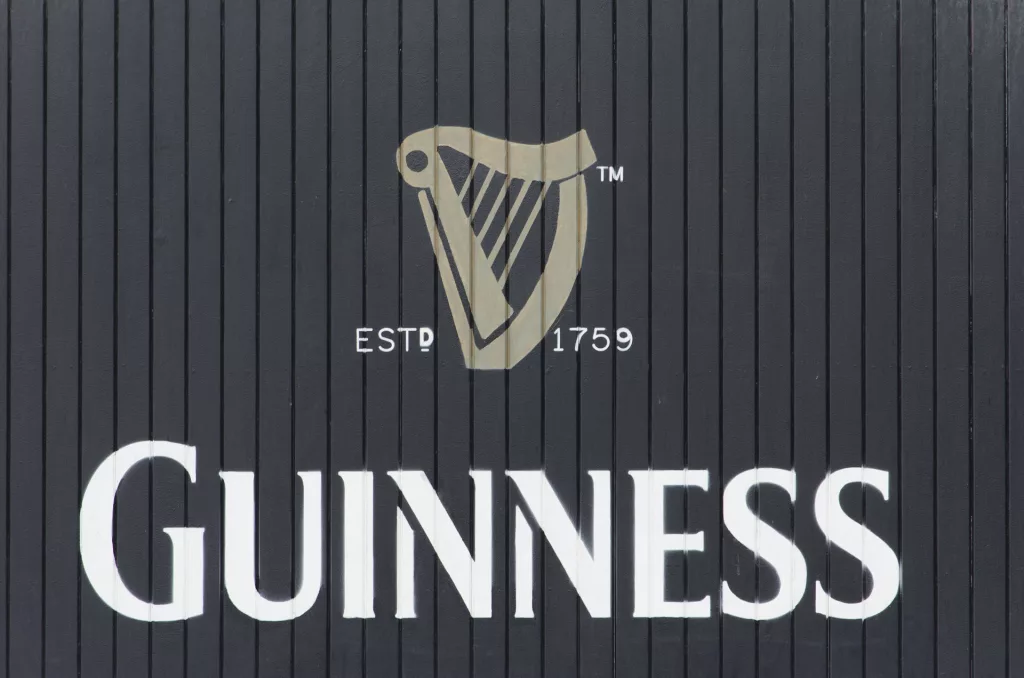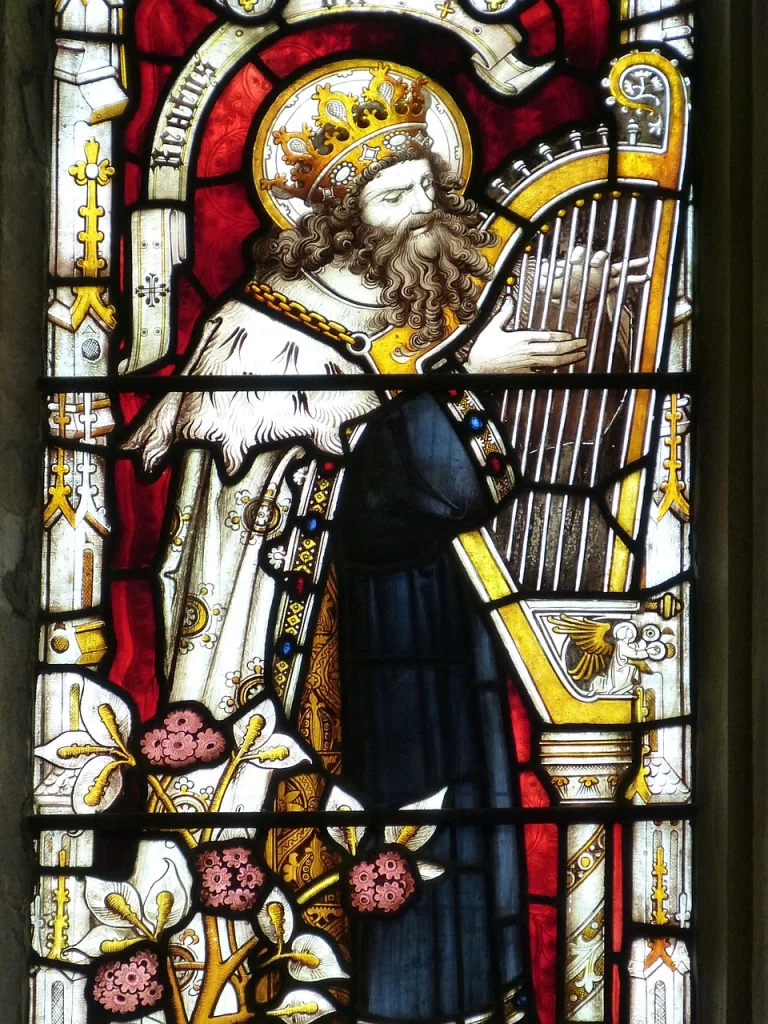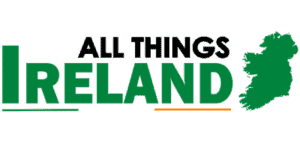
The harp (cláirseach in Irish) is a powerful symbol for Ireland that has been in use for centuries and embodies the essence of the Irish nation. Used to represent Ireland in a variety of contexts from early Gaelic manuscripts to modern-day flags and government buildings, it has come to represent the strength of culture and resilience of the Irish people.
The earliest recognized form of the cláirseach as a symbol of Ireland( Éireann in Irish) can be seen in manuscripts from the 12th century. In these manuscripts, the harp was featured prominently, often surrounded by inscriptions in Latin and names which provide evidence of its ancient origins. This is further confirmed by the presence of the harps as a decoration on Gaelic flags, where they were a representation of Irish high kings in the Middle Ages. The cláirseach continues to appear in Irish mythology, art and music, reflecting the central role it has in Irish culture.
Perhaps the most iconic representation of the harp as an Irish symbol can be seen in the modern-day Irish flag. It is usually featured in the centre, on a green background, and used in some government buildings. The tricolour of green, white and gold, which is often used as a symbol, stands for the remembrance of Irish national heroes, and the rich diversity of Irish culture. It is also used as the official seal of the government of Ireland, appearing on documents like passports and official letters, reflecting the Irish nation’s commitment to its citizens.
The cláirseach also has a deep personal significance for many. It features in popular Irish ballads, such as traditional songs about Irish immigrants longing for their homeland. It has been incorporated into Irish festivals, such as St. Patrick’s Day, and is used as a visual representation of the resilient spirit of the Irish people.
The cláirseach has been a symbol of untold generations of Irish people over many centuries. It is a powerful visual representation of Eire’s culture, reflecting the strength and resilience of a nation that has overcome many obstacles. As it continues to be used to symbolize Ireland in a variety of contexts, the harp will carry on its legacy as a symbol of the enduring heritage of the Irish people.
The Harp Is Used By The Brand Guinness

The cláirseach is one of the iconic symbols used by the renowned beer brand Guinness. Guinness has been using the harp in its logo since 1862 and it has become an integral part of the company’s history and identity. As an icon of Ireland’s culture, Guinness is deeply connected to the harp and its significance.
The cláirseach has ancient associations with Ireland and Irish culture. Irish traditional music was historically played on the harp and it was seen as a symbol of the nation. This significance continues today and it is celebrated through Guinness’s use of the harp in its branding. The Irish unmistakable traditional harp is often interlinked with Ireland’s national sports, primarily Gaelic sports such as Gaelic football and hurling. Guinness’s association with these sports has only strengthened over the years and the use of its iconic harp logo amid these games is an obvious representation of heritage and identity.
The cláirseach used by Guinness can be seen as symbolizing a number of traits, from strength and power to passion and beauty. It is often praised for its musicality and its iconic design, which has been modernized in recent years to give it a more contemporary look. The cláirseach used by Guinness helps the company develop a strong sense of identity and culture, which is often reflected in its marketing and advertising campaigns. The traditional use of the harp evokes a sense of romanticism and nostalgia, helping establish a close bond between Guinness and Irish culture.
The domestic market that Guinness has built up in Ireland is a testament to the company’s commitment to Ireland’s culture, and heritage and its association with the harp. Guinness works closely in Ireland with the Gaelic Athletic Association, and runs advertising campaigns and promotes the traditional harp as a symbol of Irishness. As an integral part of Irish culture and heritage, the harp has been embraced by Guinness to show its commitment to Ireland and its people.
The use of the cláirseach by Guinness has become a part of the identity of the beer and its brand. Through its association with traditional culture and heritage, the harp symbol creates a sense of familiarity and loyalty amongst the devotees of Guinness and the Irish in general. The use of the harp shows a bond and strong commitment to Ireland and its people, which has continued to play an important role in establishing Guinness’s identity and purpose. The cláirseach is therefore a very important part of the Guinness brand and its story and it serves to create a sense of pride, belonging and identity.
The High King Brian Boru Played The Harp In Ireland

Brian Boru was an Irish High King who lived in the 10th and 11th centuries. Born in Munster around 941 AD, he was the son of a minor chieftain, and he was unimportant until his extraordinary rise to the throne of the High King of Ireland. In addition to being recognized as a great ruler and commander, Brian Boru is celebrated for his skills as a harper – a musician who played the cláirseach. His playing is remembered as so beautiful that, legend has it, even the birds stopped singing to listen.
Brian Boru is known to have composed two songs in honour of an influential family and people he was close to in Munster. Boru dedicated the work to them praising his heroic deeds in battle and remarking upon the honour of his name.
Although the facts about Boru’s lifetime are largely unknown due to a lack of historical records, various tales about the High King’s harping have circulated since his death in 1014. One account tells of how Brian Boru was invited by the King of Thomond to entertain him on the banks of the river Shannon. Guests such as the King of Connacht and the families of his beloved supporters marvelled at Boru as he skillfully played traditional airs on his cláirseach.
The Brian Boru harp is a distant but direct descendant of the harps Boru once played in Ireland. This replica harp is the same size and shape as the ancient one, and it is the traditional harp of the Eire’s people. The strings are made of copper, brass, and steel, and the bronze end of the sound box gives it a distinctly ancient look. Similarly, the singing of the strings is said to be full of warmth and energy.
Brian Boru’s influence has spread throughout the world, not just because he played the cláirseach but through the works of other Irish harpers. His brooding style, evidenced in his own works, has been emulated by harpers such as Turlough O’Carolan, and others who have kept his melodies alive through their own performances of them. A man of great ability, Brian Boru is remembered not just as Ireland’s High King but also as one of the most beloved harpers in Irish musical history.
The legacy of Brian Boru’s talent as a harper still exists today. Traditional Irish music is still very much alive, and the harp is a key component of this beloved art form. Visits to various historical landmarks such as the Rock of Cashel, the Hill of Tara, and others are used to celebrate not just the High King’s greatness but also the beauty of his music. Through his works and legacy, Brian Boru has ensured that his contribution to Irish harping will always remain alive in Irish culture.
Check out some more of my articles below
24 Things to do and see in Limerick
Recent Posts
Unraveling the Enigma: Exploring the History and Symbolism of Celtic Knots
The Origins of Celtic KnotsThe intricate artistry of Celtic knots holds a rich history that dates back centuries to the Celtic tribes of ancient times. These ancient peoples, with their strong...
Researching Budget-Friendly Accommodation OptionsWhen planning a budget-friendly trip, one of the key aspects to consider is finding affordable accommodation. Start your search by exploring options...
